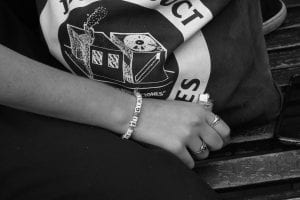The act of noticing is permanent, never ending and constantly evolving. That’s probably the first thing that comes to mind. What we notice and what we focus our attention towards is being perpetually influenced by an immeasurable number of factors and stimuli that make honing the skill a real struggle. This is why this form of experimental filmmaking is so important, because we can both explore the “impressions pressing on us at every moment” (Mason 2001) and also negate these actions through the lens of film. The camera is unbiased and doesn’t succumb to outside forces. It simply records what it is pointed towards. Obviously whatever it captures is somewhat biased due to the operator, but it still gives us a framework to eliminate these biases somewhat and experiment with what we notice in the frame rather than what we notice through our own eyes. John Mason (2001) says “We need to be selective to survive” and that’s exactly what the camera offers us as filmmakers. The ability to be selective, without using selective bias. James Benning explores this concept in most of his films by removing the influence he has over the frame and in the edit room with his shooting rules; timed cuts, he doesn’t move the camera once its set up etc. (Palse 2009) These kinds of tools are definitely what I’ll take away from this studio.
Through my first film I explored lingering and priming. And with this latest experimental project I explored wondering, and to a minor extent continued with lingering considering each of the pieces piece lingered on the one shot in the and stayed in on respective location. From making this short film experience, the most integral way that I have evolved my process of noticing to make audiovisual nonfiction are in the rigid rules I implemented before I got to the set/location(s) for my filmmaking. When I am trying to create media centred around noticing, the best way to do it is to ensure that I stay on task. The recipes we create, and the rules I outline before I begin my shoot are essential to this endeavor. Deciding on framing, equipment needs, shot duration, camera movement, shot types etc in advance of the shoot can aid in the act of noticing freely because you remove yourself somewhat from the situation. You aren’t impulsively moving the camera around, and this enables you to capture uniform shots of different locations that is not only useful in the edit room, but also allows for patterns and similarities to emerge in unforeseen ways.
Throughout the course I feel that the three most key learning outcomes I have discovered would be;
The importance of Intentional Noticing And Reflection
Obviously, we are constantly noticing things. But what is incredibly important as a media practitioner is the ability to look inwards and observe our own noticing as a biased, deliberate practice. John Mason (2001) says that reflection is the “vogue term” for this process, but that usually not effectively implemented. This was certainly true for me before this course. I had made several short pieces or films but never really looked back on the project as a whole. This studio has shown me the importance of this part of the media making process. I’ve had countless ideas for this most recent experimental piece just from writing extensively about the previous work I did. And similarly, I’m growing ideas for my next work outside of class from this exercise. This form of “experiential learning” (Mason 2001) is key but it requires intentional noticing. Noticing as an abstract idea cannot be honed, but this act of intentional noticing becomes an inquiry into our own biases and a “practical approach” that can be reflected upon and improved.
The impact of blending two or more semantically opposed elements
Before this studio, I think if I am being honest I was quite rigid in my filmmaking. Cuts had to be timed perfectly, things that weren’t crystal clear needed to be either reexamined or expunged etc. However this studio has taught me that I need to embrace these murky elements within my films/media projects. One such project that is both a perfect example of this and also incredibly beautiful is Mazen Kerbaj’s Starry Night (2013). A minimalistic trumpet improvisation over the backdrop of the haunting sounds of war, gunfire and bombs in Mazen’s city of Bierut recorded from his balcony. Linking two completely unrelated audio/visual elements together on screen can create a powerful impression for the viewer and call upon them to further contemplate the implications within your work.
Limiting yourself is a worthwhile practice
Throughout the various media projects I made this semester, I think an incredibly important tool I will carry forward is to limit myself. Which sounds like a bizarre thing to do, but it can be incredibly useful in honing filmmaking skills. Limiting my shot duration, limiting my framing, limiting my input into the camera work etc were all huge benefits to the projects. There is an inherent quality in simplicity that this studio has allowed me to explore through experimental filmmaking that can create truly inspirational work. There are several examples of this throughout the Studio. James Benning’s films such as Los (2001) or Ruhr (2009) are perfect examples of implementing this tactic.
References
James Benning. (2001). Los. [Online Video]. 26 October 2001. Available from: https://www.youtube.com/watch?v=NZGxdGRJ3rg
James Benning. (2009). Ruhr. [Online Video]. 2 November 2009. Available from: https://www.youtube.com/watch?v=MVXuEi3tau4
Mason, John. Researching your own practice: the discipline of noticing, (p.29-38). London: Routledge Falmer, 2001
Mazen Kerbaj. (2013). Starry Night. [ONLINE]. July 2006. Available from: https://lautremusique.bandcamp.com/track/starry-night









